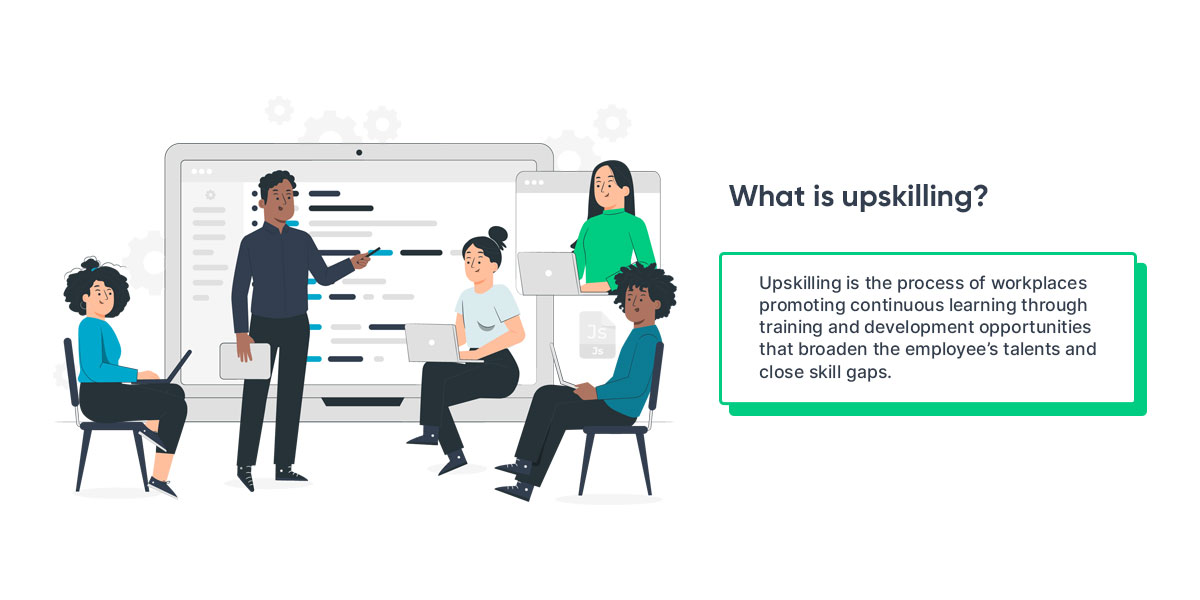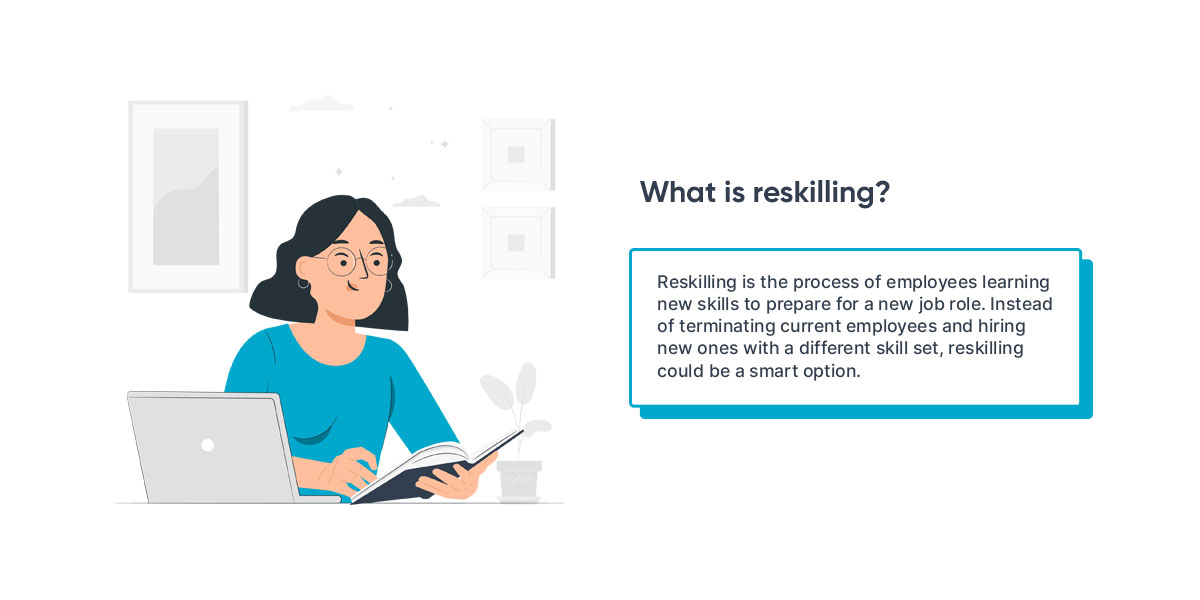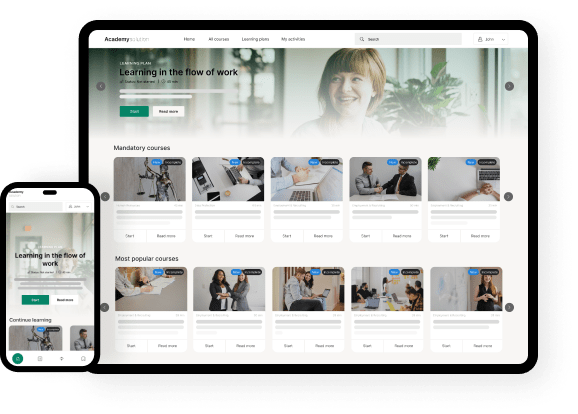In the past, employee development was just a benefit you’d be lucky to receive. But due to the rapidly changing landscape, the corona pandemic, and a new focus on skills of the future, concepts such as upskilling and reskilling have gained traction.
What is upskilling and reskilling?
Upskilling and reskilling your workforce is now more important than ever.
Due to economic and technological changes, expanding and developing one’s competencies has become much more necessary. Right now, many companies actually lack competencies. Therefore is retraining employees as relevant as ever.
Before we dive into how you should go about skills of the future, we should look at what upskilling and reskilling is. Although the two terms sound much alike, they aren’t the same. Maybe using one concept is enough for your organization. Maybe you need to make use of both for maximum efficiency. We’ll see!
- Upskilling:
Most people know upskilling as upgrading one’s current competencies. Doing this is most certainly nothing new. For many organizations this practice has been an integrated process for many years. What’s new is that organizations today dedicate much more time to this process. And that is in particular due to digitization efforts. In recent decades, the entire labor market – not to mention the whole world – has been digitized, automated, and influenced by new technologies.
These changes has had a huge impact on how we work. Like many others, you might have had to learn new skills in order to keep up with these developments. And that is the essence of upskilling. You learn new skills that improve your work methods so you bring more value to your workplace. In other words, upskilling helps give employees the tools and knowledge they need to perform their current job more efficiently or in a more modern way.

- Reskilling:
Reskilling, on the other hand, is not a concept talked about often. With reskilling you also upgrade current competencies, however the process has a slightly different end goal. You can look at reskilling as a form of retraining. It’s about existing employees gaining new competencies that extend beyond their current position.
When organizations digitize tasks and relocate their employees, reskilling the workforce is often of utmost importance. According to World Economic Forum, as many as 66 million people will lose their jobs due to automation. This is just one of the situations you can avoid by reskilling your employees.
Reskilling retains valued employees in a new role or department and pair their existing competencies with new competencies.

Upgrading competencies or retraining – or both?
In most situations a combination of upskilling and reskilling is a good idea. Especially if you want to improve the efficiency of your business. However, there are some situations where one concept is more obvious than the other.
Reskilling works very well if you want to retain a reliable employee whose role has become obsolete. This could be due to a department closure or relocation or the introduction of new technologies.
Upskilling, on the other hand, works in almost any situation where you want to ensure the success of new and old employees in their current positions.
Typically a combination of both concepts will work best, though. And if you have the choice, continuous and individually adapted learning is always the best option.
Put reskilling and upskilling on the agenda with an e-learning platform
Whether you are in the process of upgrading or retraining – or both – it is important to do it properly. It may seem like a major task to keep track of and initiate an upskilling / reskilling program, but it doesn’t have to be.
But how do you upskill and reskill your workforce in a clear and structured way then?
There are many ways to learn a new skill. One example is physical courses that work as an extension of the work day. Another example is blended learning, which is a mix of physical and online teaching. For the latter, one usually uses an e-learning platform like ours that is built on top of our powerful LMS.
If you want to get the most out of your learning, it’s important to make it a continuous part of your employees’ workflow. With an e-learning platform, you can make learning and competence development a natural part of their work. Our e-learning platform can, for example, be tailored to your needs, so upskilling and reskilling your workforce becomes a personalized experience.
With an e-learning platform you can also exploit the benefits of microlearning. Microlearning is learning in small chunks which is ingenious because the employee can complete it when it fits their schedule. This makes it easier to upgrade an employee’s competencies during normal work hours.
Ready, set, go!
An e-learning platform is just one of many ways in which you can put reskilling and upskilling on the agenda.
If you want full control over your reskilling program, a personalized and tailored e-learning platform might be the right solution for you. At Cursum we call this solution an online academy.
If you want to learn more about our online academy, we have created a guide that shows you how to easily get started with your own. Find it here.
We hope that you after reading this blog are ready to reskill and upskill your workforce. If you need help distributing your learning content in a simple and easy way, feel free to contact us for a non-binding strategy meeting.


